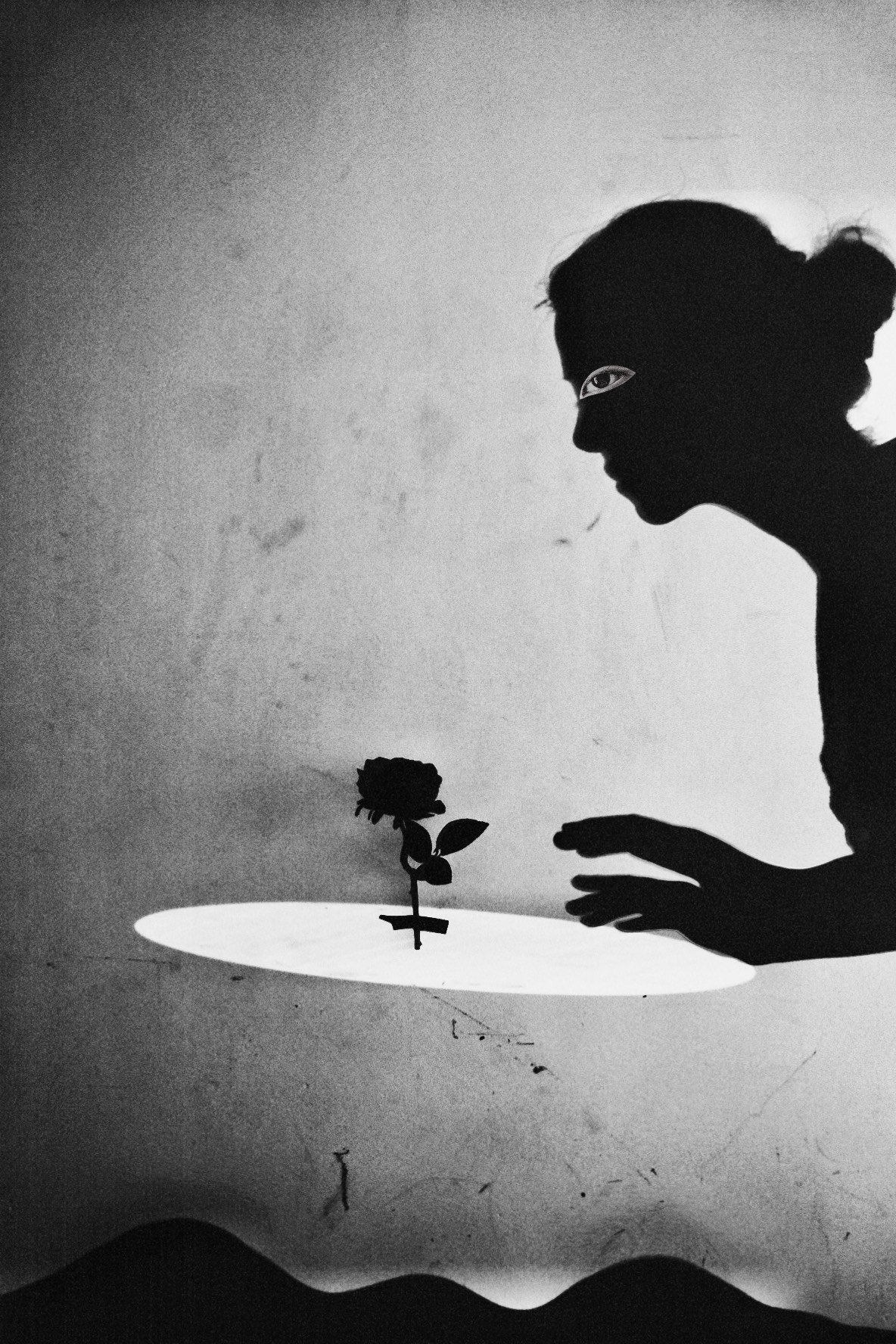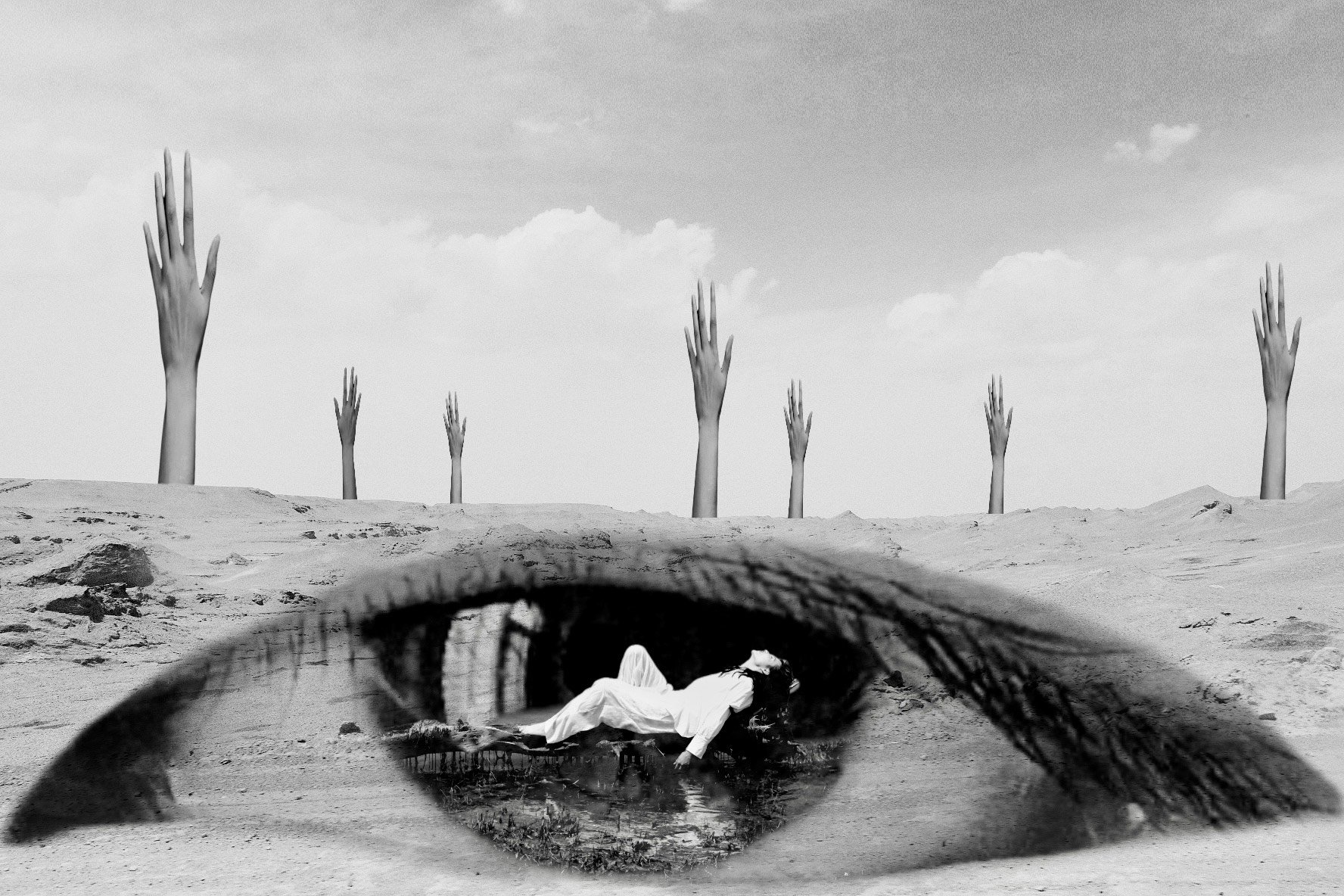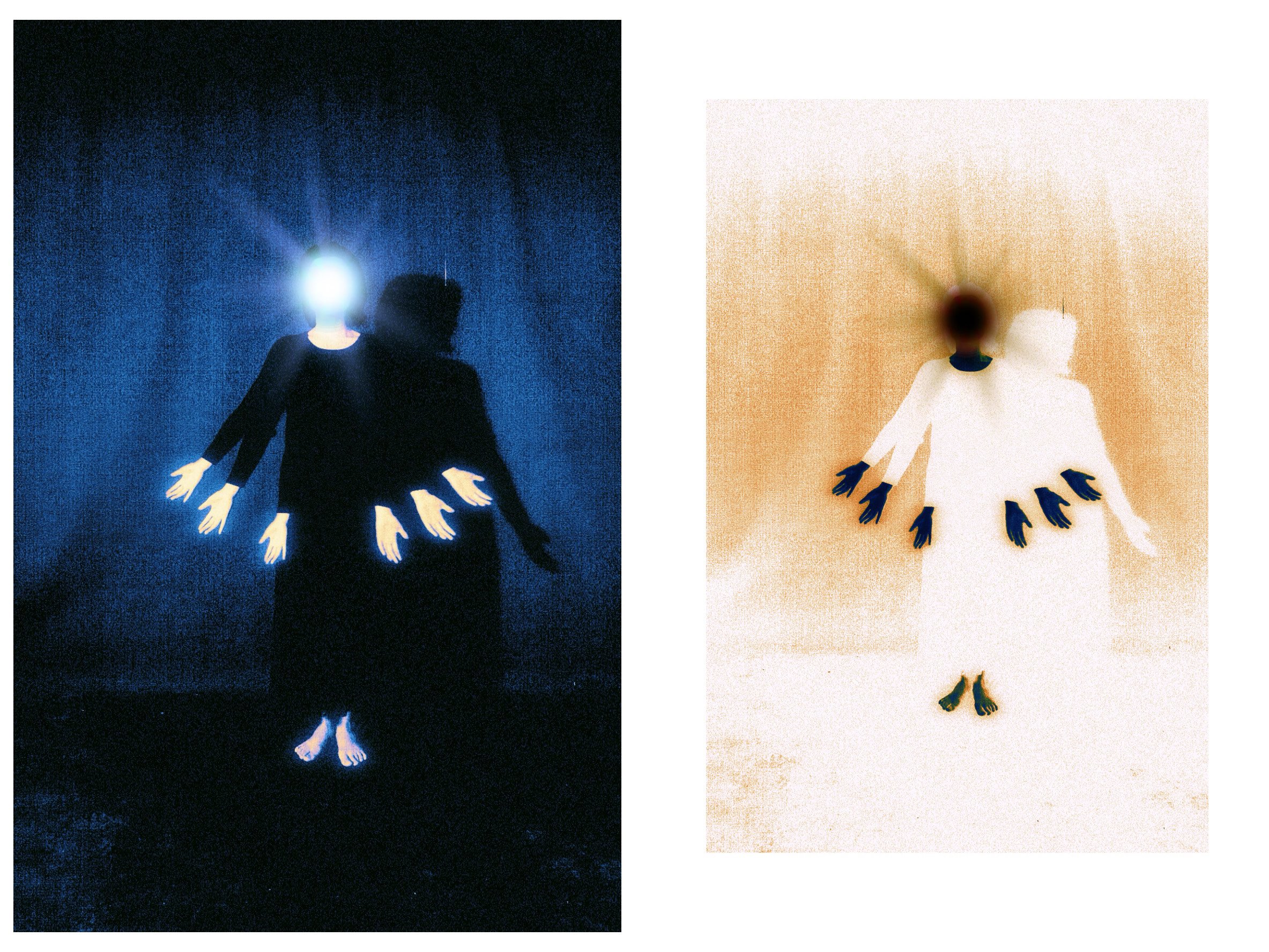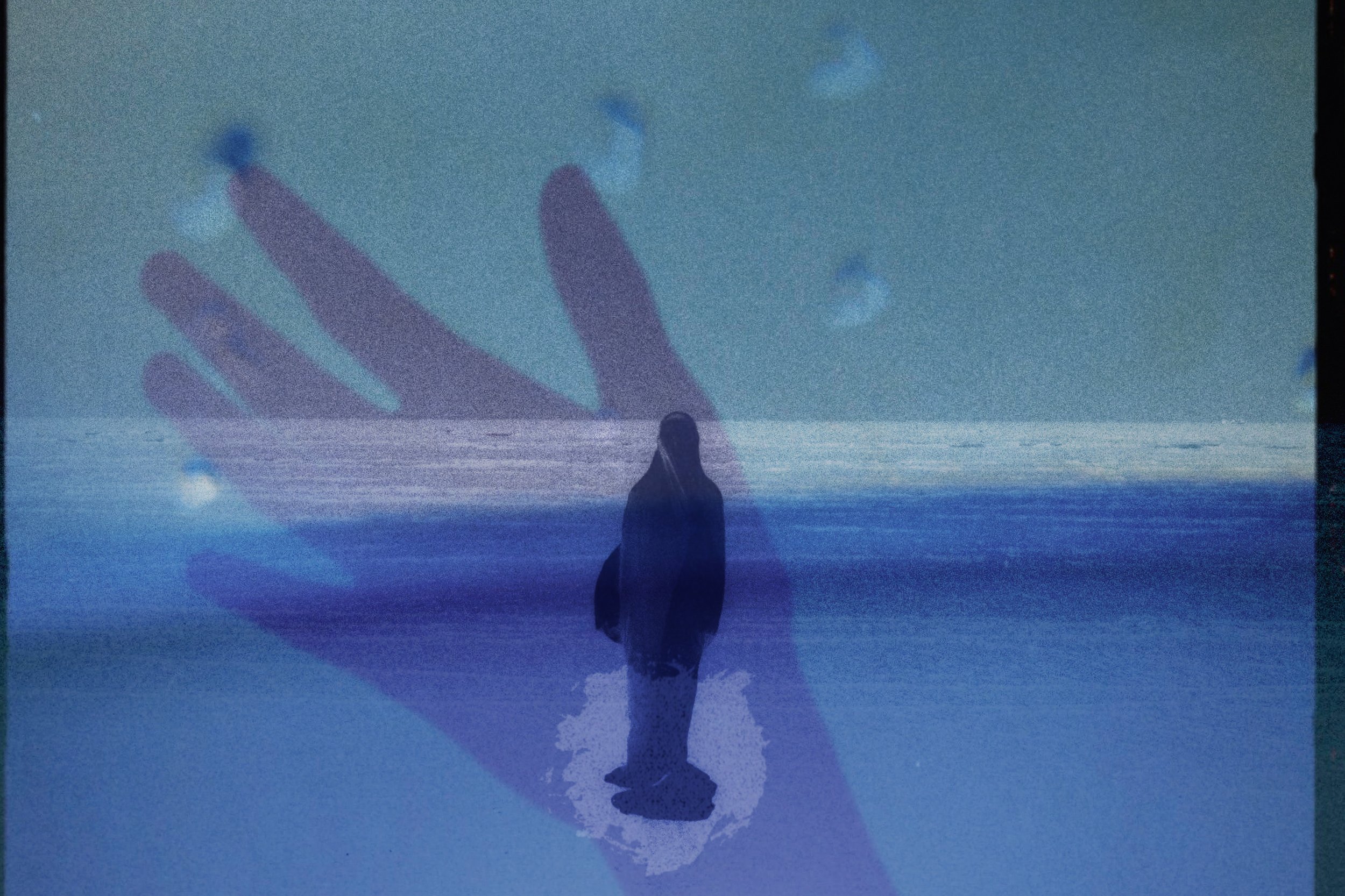Wu Lin, at just 26 years old, stands as one of the youngest artists I’ve had the privilege to interview. Reflecting on my own journey at 26, photography wasn’t even on my radar. Yet, through her lens, she captures a depth of expression and exploration of self that is both profound and inspiring. Her photos serve as a mirror to her inner world, inviting us to journey alongside her as she navigates the complexities of life and self-discovery. What truly captivates me is not just her age, but her unique approach to self-portraiture and self-expression through photography.
As I prepare for this interview, I can't help but question whether my assumptions about age and artistic expression are accurate. Perhaps age is just a number, and true creativity knows no bounds. Join me as we delve into the world of a young artist whose work challenges conventional wisdom and speaks volumes about the power of self-expression.
As Nicholas Nixon once said, “The world is infinitely more interesting than any of my opinions about it,” and through her work, I immediately resonate with this sentiment. Like her Instagram account name, @ymengren, translates to “dream wanderer”, today’s interview promises to offer a glimpse into the raw and introspective journey of a young artist finding her voice and vision.
photo by @ymengren (Wu Lin)
1. Can you share what initially drew you to photography as a means of artistic expression, and how has it evolved over time?
At first, I occasionally worked as a model for some photographer friends, and I enjoyed this feeling during the shooting process. So, I started to explore how to shoot and how to express my thoughts through the camera. At first, I didn't have a camera, but I took selfies with my phone. In the early stages, I was still relatively immature and didn't have a very distinct style. It was only after I bought a camera that I gradually embarked on this path. Many photographers look for different models to create their own works, but my personality is not very good at communicating with others. I also like to aim the camera at myself, allowing for immediate self-portrait and reduce more time and cost. Photography is not my profession, I treat it as a pure passion, enabling me to maintain focus without any distractions during the creative process. It has been four or five years since I truly began, and I continue to evolve my photography journey.
photo by @ymengren (Wu Lin)
2. Your self-portraits often involve reflections in mirrors, reminiscent of Vivian Maier's work. What about this style resonates with you, and what emotions or themes do you aim to convey through this technique?
Using mirrors for photography is a technique I truly enjoy, offering numerous creative possibilities. This fascination was kindled when I encountered Vivian Maier’s works in the early stages of my photographic journey. Mirrors, to me, represent a double-sided world where we can only perceive our outward appearance through reflection. It serves as a constant reminder that, despite seeing our physical selves, it merely scratches the surface. There’s a need to look beyond the superficial and delve into the reflections to uncover the deeper aspects, allowing for a more complete understanding of our inner selves. This symbolic significance underlies my frequent use of mirrors in my photography.
photo by @ymengren (Wu Lin)
3. Your use of body parts like arms, hands, and eyes is distinctive in your compositions. Could you elaborate on the symbolism behind these choices and how they contribute to conveying your inner thoughts and emotions?
My hands and eyes frequently take center stage in my creative compositions, to the extent that friends can identify my work without checking the titles. Initially absent in my early selfie creations, these elements gradually became prominent and are now integral symbols in my artistic expression. I consider these elements as symbolic representations in my works, each holding a dual meaning: the hand signifies the power to press the shutter, and the eyes serve as the medium through which I perceive the world through the lens. The second layer of symbolism lies in the body and eyes as objective symbols of not only my existence but also that of every individual. Our eyes serve as conduits for seeing and expressing emotions, while the body stands as the pillar of human sensory experience and action.
Much like poets convey emotions through written words, I use my hands and eyes to express the derivatives of my thoughts. In my view, these symbols are etched by consciousness, serving as a unique language in my visual storytelling.
photo by @ymengren (Wu Lin)
4. In your photography, there seems to be a theme of duality, confusion, and self-discovery. Can you delve into what these concepts mean to you and how they manifest in your work?
My photographs capture a spectrum of inner emotions—confusion, entanglement, loneliness, and sadness—flowing within my own world. While many portray the beauty in my life, as a creator, I find it crucial to immerse myself in various emotions continually. Without these, the subjects I capture might lack depth, a reflection of my personality.
Different personalities give rise to distinct photography styles, each with its admirable aspects. My personality, centered on self-portraiture, dictates the focus on showcasing myself. There’s no need to cater to external expectations; instead, I aim to present myself fully, imprinting my essence in photos, akin to an author’s unique style evident across their books.
Just as every character in a book embodies the author’s personality, the overall style conceals the writer’s distinctive touch and personal shadow. Similarly, when I pick up the camera, it’s a conscious decision to inject my own shadow into existence. How the audience perceives it becomes their unique perspective on the world I present.
photo by @ymengren (Wu Lin)
5. Are there specific artists or photographers who have profoundly influenced your creative journey? How have they inspired your approach to photography?
At present, I don’t have a specific photographer who profoundly influences me. I frequently explore the works of various photographers on the internet, collecting exceptional pieces that provide me with diverse inspiration, insights, and learning. The abundance of unique creators ensures that there is no fixed influence. The continuous effort and variety within the creative community make it worthwhile to constantly learn and create.
6. Symbolism plays a significant role in your art. How do you approach the use of symbols, and what meanings do they hold in the context of your personal experiences and inner world?
Symbolism plays a significant role in my art, rooted in my experiences as a model collaborating with various photographers. These collaborations sparked the growth of creative seeds within me, exposing me to diverse shooting angles and ideas. The collaborative process, where we integrated each other's concepts, provided a delightful and eye-opening experience. However, as a self-portrait artist, capturing the essence of a moment within the brief seconds of a timed shutter presents a unique challenge. To enhance the symbolism in my images, I often incorporate additional elements during post-production. For instance, I integrate myself into landscape photos taken previously, creating a symbiotic relationship between myself and the natural surroundings. This fusion emphasizes my belief that both nature and I are symbols of life—two distinct entities coexisting in the same form. It allows me to showcase myself uniquely within a corner of the world.
photo by @ymengren (Wu Lin)
7. Your work appears to be a visual exploration of growing questions in life. Could you share some of the overarching questions you're exploring, both personally and universally, through your photography?
In my daily life, I find joy in reading books that delve into the essence of human nature and the mysteries of life. My curiosity about life and the universe has led me to explore related literature, and studying psychology aids in my self-discovery. The deeper my understanding becomes, the more elusive my self-perception becomes. Consequently, some of my works portray myself in a vague state, addressing the constant exploration of life’s essence. Noumenon, nature, consciousness—all complex concepts I engage with in my exploration. My works are imbued with intricate elements, mirroring the complexity surrounding these philosophical ideas. Beyond the enjoyment of studying, I seek inspiration from various sources, including philosophy, poetry, and psychology. These readings not only enrich my thoughts but also influence my creative process. For instance, Plato’s cave theory has inspired me—the idea that people can only see shadows on cave walls, mistaking shadows for the only reality. In a similar vein, the unclear elements in my creations represent parts of existence that remain elusive yet integral, drawing parallels with the shadows in Plato’s allegory.
photo by @ymengren (Wu Lin)
8. As you navigate your path as an artist, what challenges have you encountered, and how do you use these challenges as opportunities for growth and self-discovery?
As an artist, I encounter challenges, especially when dealing with the limitations of the selfie perspective. The key challenge lies in constantly adjusting and pushing the boundaries during the creative process. If faced with an impasse, I pivot to alternative perspectives, striving to overcome these limitations. Working alone, I must complete all actions within a confined timeframe, adding an extra layer of complexity to the process. Debugging and refining each shot pose their own challenges, but the most formidable obstacle is the quest for producing compelling works. This challenge necessitates dedicated time for study and experimentation. Throughout this journey, the joy lies in witnessing breakthroughs and realizing possibilities that were previously unknown. Without venturing into this field, I might never have discovered the extent of my capabilities.
9. What do you hope your audience takes away from your photographs, especially those who may resonate with the themes of confusion and self-reflection?
I genuinely hope that those who view and appreciate my works find a resonance in their thoughts and feel compelled to engage in a dialogue with me. Collaborating on creative endeavors would add an extra layer of interest to our interaction. It’s heartening to see some online users reaching out to chat and inquire about creative skills, and I’m delighted to share my experiences within my capacity. I believe this exchange is a meaningful and fulfilling aspect of our artistic connection.
photo by @ymengren (Wu Lin)
10. Looking ahead, what experiences or aspects of life are you most eager to capture through your lens, and how do you envision your artistic journey unfolding in the future?
In the future, I aspire to venture outdoors, capturing a diverse range of works and experimenting with various styles. Collaborating with different creators to explore new perspectives and engage in thought-provoking collisions is an exciting prospect, potentially yielding more unique creations. My intention is to continue producing works, curating photography collections, and maintaining an ongoing commitment to learning and creativity. The driving force behind my artistic journey remains the desire to share my resonant creations with a wider audience.
Thanks Wu Lin and Please Find More Her Works @ymengren
Thank YOU for Reading!








